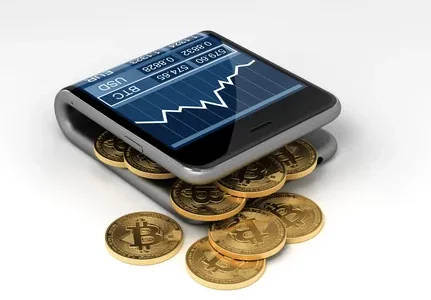In the ever-evolving world of cryptocurrencies, the ability to exchange between different digital assets is crucial for investors, traders, and enthusiasts. This comprehensive guide will walk you through the process of exchanging Stellar Lumens (XLM) to Ethereum (ETH), two prominent cryptocurrencies with distinct features and use cases. We’ll explore the characteristics of both currencies, the reasons for exchanging them, and provide a detailed step-by-step process to complete such a transaction.
Table of Contents
- Introduction to Stellar Lumens (XLM) and Ethereum (ETH)
- Why Exchange XLM to ETH?
- Understanding the XLM to ETH Exchange Process
- Step-by-Step Guide to Exchanging XLM to ETH
- Choosing the Right Exchange Platform
- Security Considerations
- Tax Implications
- Market Timing and Price Considerations
- Alternative Exchange Methods
- Future Outlook for XLM and ETH
- Conclusion
1. Introduction to Stellar Lumens (XLM) and Ethereum (ETH)
Stellar Lumens (XLM)
Stellar is an open-source, decentralized protocol for digital currency to fiat money transfers which allows cross-border transactions between any pair of currencies. Stellar Lumens (XLM) is the native cryptocurrency of the Stellar network.
Key features of Stellar Lumens include:
- Fast transactions: Stellar can handle thousands of transactions per second.
- Low fees: Transaction costs are minimal, usually a fraction of a cent.
- Multi-currency support: The network can handle exchanges between different currencies.
- Smart contracts: Stellar supports simple smart contracts for more complex transactions.
Ethereum (ETH)
Ethereum is a decentralized, open-source blockchain platform that enables the creation and execution of smart contracts and decentralized applications (dApps). Ether (ETH) is the native cryptocurrency of the Ethereum network.
Key features of Ethereum include:
- Smart Contracts: Self-executing contracts with the terms of the agreement directly written into code.
- Decentralized Applications (dApps): Applications that run on a P2P network of computers rather than a single computer.
- Ethereum Virtual Machine (EVM): A Turing-complete software that runs on the Ethereum network, allowing anyone to run any program.
- Wide adoption: Ethereum has a large and active developer community and is widely used in various blockchain applications.
2. Why Exchange XLM to ETH?
There are several reasons why an individual might choose to exchange Stellar Lumens (XLM) for Ethereum (ETH):
- Access to DeFi: Ethereum is the primary platform for decentralized finance (DeFi) applications. Exchanging to ETH allows participation in various DeFi protocols for lending, borrowing, or yield farming.
- Smart Contract Functionality: If a user wants to interact with more complex smart contracts or dApps, Ethereum’s platform offers more extensive capabilities than Stellar’s.
- NFT Market: Ethereum is the dominant blockchain for non-fungible tokens (NFTs). Exchanging to ETH enables participation in NFT marketplaces and projects.
- Diversification: Investors often spread their assets across different cryptocurrencies to manage risk and exposure to different blockchain technologies.
- Wider Adoption: Ethereum has a larger user base and is more widely accepted in various platforms and services.
- Development Opportunities: For developers, Ethereum offers a robust platform for building and deploying decentralized applications.
- Speculation: Traders might see potential price movements that make exchanging XLM to ETH profitable.
- Staking Opportunities: With Ethereum’s transition to proof-of-stake, ETH holders can participate in network validation and earn rewards.
3. Understanding the Exchange Process
Exchanging XLM to ETH involves several steps and considerations:
- Wallet Setup: You’ll need wallets for both XLM and ETH to store and transfer your cryptocurrencies.
- Choosing an Exchange Platform: Select a reputable cryptocurrency exchange that supports both XLM and ETH.
- Account Creation and Verification: Most exchanges require users to create an account and complete a Know Your Customer (KYC) process.
- Depositing XLM: Transfer your XLM from your personal wallet to the exchange.
- Executing the Exchange: Create an order to sell XLM and buy ETH at the current market rate or a specified price.
- Completing the Transaction: Once the order is filled, you’ll receive ETH in your exchange account.
- Withdrawing ETH: Transfer the newly acquired ETH to your personal ETH wallet for safekeeping or use in the Ethereum ecosystem.
4. Step-by-Step Guide to Exchanging XLM to ETH
Now, let’s break down the process into more detailed steps:
- Set up wallets:
- For XLM, use wallets like Solar Wallet, Lobstr, or hardware wallets like Ledger.
- For ETH, use wallets like MetaMask, MyEtherWallet, or hardware wallets that support ETH.
- Choose an exchange platform:
- Research exchanges that support both XLM and ETH trading pairs.
- Popular options include Binance, Kraken, and Coinbase.
- Create and verify your account:
- Sign up on the chosen exchange.
- Complete the KYC process, which typically involves providing identification documents and proof of address.
- Secure your account:
- Enable two-factor authentication (2FA) for added security.
- Use a strong, unique password.
- Deposit XLM:
- In your exchange account, find the XLM deposit address.
- From your XLM wallet, send the amount you wish to exchange to this address.
- Wait for the transaction to be confirmed on the Stellar network.
- Navigate to the XLM/ETH trading pair:
- Once your XLM deposit is confirmed, go to the exchange’s trading section.
- Find the XLM/ETH trading pair. If it’s not available directly, you might need to use an intermediary like USDT.
- Place your exchange order:
- Choose between a market order (instant execution at current price) or a limit order (execution at a specified price).
- Enter the amount of XLM you want to exchange.
- Review the details, including any fees, and confirm the order.
- Wait for the order to be filled:
- For market orders, this should happen almost instantly.
- For limit orders, it may take some time depending on market conditions.
- Verify the transaction:
- Check your exchange account to confirm that you’ve received the ETH.
- Withdraw ETH to your personal wallet:
- Find the withdrawal section for ETH on the exchange.
- Enter your personal ETH wallet address and the amount you wish to withdraw.
- Confirm the withdrawal and wait for it to be processed.
- Confirm receipt in your ETH wallet:
- Check your ETH wallet to ensure the funds have arrived.
5. Choosing the Right Exchange Platform
Selecting the appropriate exchange platform is crucial for a smooth and secure XLM to ETH conversion. Consider the following factors:
- Supported cryptocurrencies: Ensure the platform supports both XLM and ETH.
- Trading pairs: Check if the XLM/ETH pair is available directly, or if you need to use an intermediary currency.
- Liquidity: Higher trading volumes generally mean better prices and faster order execution.
- Fees: Compare trading fees, deposit fees, and withdrawal fees across platforms.
- Security measures: Look for platforms with strong security features like cold storage, 2FA, and insurance funds.
- Regulatory compliance: Choose platforms that comply with relevant regulations in your jurisdiction.
- User interface: A user-friendly interface can make the exchange process much smoother, especially for beginners.
- Customer support: Good customer service is crucial if you encounter any issues during the exchange process.
- Reputation: Research the platform’s history, user reviews, and any past security incidents.
- Geographical restrictions: Ensure the platform is available and legal to use in your country.
6. Security Considerations
When exchanging cryptocurrencies, security should be a top priority. Here are some key security considerations:
- Use reputable wallets: Store your XLM and ETH in well-reviewed, preferably open-source wallets.
- Enable all security features: Utilize 2FA, email confirmations, and any other security options offered by your exchange platform and wallets.
- Use strong, unique passwords: Never reuse passwords across different platforms.
- Be wary of phishing: Always double-check URLs and email addresses to ensure you’re interacting with legitimate sites.
- Keep software updated: Regularly update your wallets, operating systems, and antivirus software.
- Use hardware wallets: For long-term storage, consider using hardware wallets for both XLM and ETH.
- Understand the risks of leaving funds on exchanges: While convenient, keeping large amounts of cryptocurrency on exchanges can be risky. Transfer to personal wallets when not actively trading.
- Be cautious with public Wi-Fi: Avoid making transactions or accessing sensitive information on public networks.
- Educate yourself: Stay informed about common cryptocurrency scams and best practices for digital security.
- Verify addresses: Always double-check the recipient address when sending cryptocurrencies.
7. Tax Implications
The tax treatment of cryptocurrency transactions varies by country and can be complex. Here are some general points to consider:
- Record-keeping: Maintain detailed records of all your cryptocurrency transactions, including the XLM to ETH exchange.
- Capital gains: In many jurisdictions, exchanging one cryptocurrency for another is a taxable event, potentially subject to capital gains tax.
- Fair market value: You may need to determine the fair market value of both XLM and ETH at the time of the exchange for tax purposes.
- Professional advice: Consider consulting with a tax professional who specializes in cryptocurrency transactions.
- Reporting requirements: Be aware of any specific cryptocurrency reporting requirements in your jurisdiction.
- Software solutions: Consider using cryptocurrency tax software to help track and calculate your tax obligations.
- International considerations: If you’re exchanging across international borders, be aware of any additional tax implications.
8. Market Timing and Price Considerations
Timing your XLM to ETH exchange can significantly impact the value you receive. Consider these factors:
- Market volatility: Cryptocurrency markets can be highly volatile. Monitor price trends before making large exchanges.
- Liquidity: Exchanging during times of higher liquidity (usually during overlap of major global market hours) can result in better prices.
- News and events: Stay informed about developments in both the Stellar and Ethereum ecosystems that could affect prices.
- Technical analysis: If you’re experienced, use technical analysis tools to identify potential entry and exit points.
- Dollar-cost averaging: For large amounts, consider splitting your exchange into smaller transactions over time to mitigate timing risk.
- Slippage: Be aware that large orders may experience slippage, especially in less liquid markets.
- Exchange rates: Consider the exchange rates offered by different platforms, as they can vary.
- Gas fees: For Ethereum transactions, be aware of current gas fees, which can significantly impact the cost of moving ETH.
9. Alternative Exchange Methods
While centralized exchanges are the most common method for exchanging XLM to ETH, there are alternatives:
- Decentralized exchanges (DEXs): Some DEXs support XLM and ETH trading, offering increased privacy and control. However, finding direct XLM/ETH pairs on DEXs can be challenging.
- Atomic swaps: While not yet widely available for XLM to ETH directly, this technology allows for trustless peer-to-peer exchanges.
- Over-the-counter (OTC) trading: For large volumes, OTC desks can provide personalized service and potentially better rates.
- Multi-currency wallets: Some wallets offer built-in exchange functionality, simplifying the process but often at higher fees.
- Peer-to-peer platforms: Some platforms allow direct trading between individuals, though finding XLM to ETH trades may be challenging.
10. Future Outlook for XLM and ETH
Understanding the potential future developments of both Stellar Lumens and Ethereum can inform your decision to exchange XLM to ETH:
Stellar Lumens (XLM) Outlook:
- Continued focus on cross-border payments and remittances.
- Potential partnerships with traditional financial institutions.
- Development of more complex smart contract capabilities.
- Ongoing efforts to improve scalability and transaction speed.
Ethereum (ETH) Outlook:
- The completion of Ethereum 2.0 upgrade, transitioning to a proof-of-stake consensus mechanism.
- Continued growth of the DeFi and NFT ecosystems built on Ethereum.
- Development of layer-2 scaling solutions to improve transaction speed and reduce costs.
- Increased institutional adoption and integration with traditional finance systems.
- Ongoing competition from other smart contract platforms.
Consider how these potential developments align with your investment goals and risk tolerance.
11. Conclusion
Exchanging XLM to ETH involves navigating the unique characteristics of two different blockchain ecosystems. While Stellar Lumens focuses on fast, cheap cross-border transactions, Ethereum provides a robust platform for decentralized applications and financial instruments. The decision to exchange between these two should be based on your specific needs, risk tolerance, and outlook on the future of these technologies.
Remember to prioritize security throughout the exchange process, stay informed about the regulatory landscape, and consider the tax implications of your transactions. By following the steps outlined in this guide and conducting thorough research, you can navigate the XLM to ETH exchange process with confidence.
As the cryptocurrency ecosystem continues to evolve, staying educated and adaptable will be key to making informed decisions in your crypto journey. Whether you’re diversifying your portfolio, exploring new blockchain technologies, or shifting your cryptocurrency strategy, understanding the intricacies of exchanges like XLM to ETH is an invaluable skill in the digital asset space.
The future of both Stellar Lumens and Ethereum looks promising, albeit in different ways. Stellar continues to focus on improving global financial infrastructure, while Ethereum is at the forefront of building a decentralized internet. By understanding both ecosystems, you’re better equipped to navigate the exciting and rapidly changing world of cryptocurrencies.
Remember, while this guide provides a comprehensive overview, the cryptocurrency market is highly dynamic. Always stay informed about the latest developments, conduct your own research, and consider seeking advice from financial professionals before making significant investment decisions.








